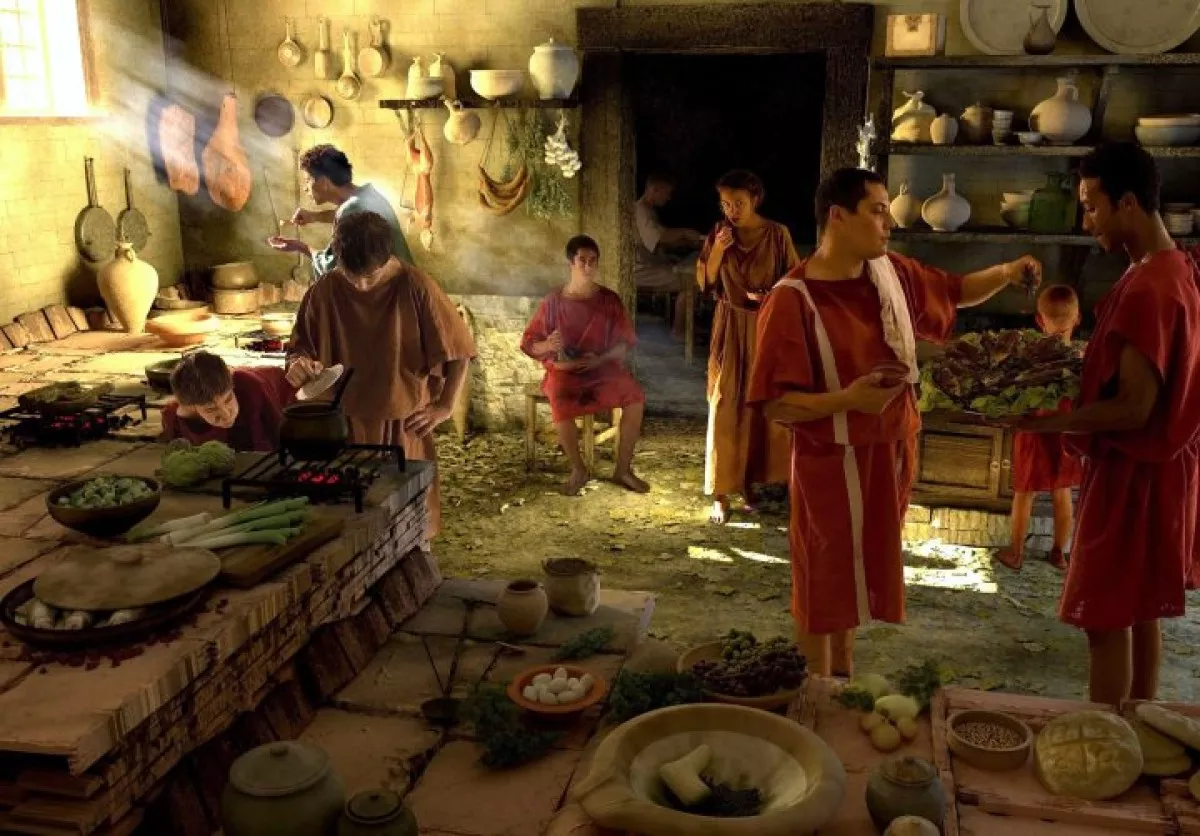
Ancient Romans paid special attention to their meals, and their daily routine was clearly defined. This was reported by Upl.uz.
Typically, they would wake up at six o'clock and immediately move on to breakfast — the jentaculum. This was a light meal consisting of simple bread, wheat bread, sweet dates, and honey.
They often drank these with wine, and sometimes mixed with water. Occasionally, leftovers from dinner would also be placed on the table and not wasted.
Around ten to eleven o'clock, the next meal called prandium would come. This was a small snack, often consisting of a little meat, cheese, and bread.
Prandium was intended for simple and quick eating, as Romans wished to continue their daily tasks. The most important meal was called cena, which consisted of three parts and was considered an important ceremony, especially for wealthy citizens.
At the beginning of cena, light dishes called gustatio were served. These dishes included eggs, seafood, sometimes meat, and olives.
Along with this, mulsum — wine sweetened with honey and mixed with water — was offered. The next part, called fecula, consisted of various vegetables and complex dishes.
At the end of cena, caput cenae, or the main dish, was usually presented, which was typically meat or fish. Wealthy Romans would have extravagant dishes like a whole roasted pig or rare birds, such as a four-legged duck or a four-headed bird.
After the main dishes, a dessert called mensae secundae was served. This consisted of fruits, nuts, and sometimes sweets.
In Roman cuisine, garum sauce held a special place. It was prepared from small fish and fish scraps, mixed with vinegar, salt, or wine.
Garum was very popular, and each province had its own unique recipe. In some regions, it replaced salt and became the main means of flavoring dishes.
During the period of the Roman Republic, lunch was held in the middle of the day, around the current lunch time. However, by 79 AD, when Rome became an empire, cena was moved to the evening or night.
If there were guests at home, the meal would stretch to four hours, and conversations, wine drinking, and exchanging news would take place around the table. This was not just a meal but an important social event.
Interestingly, taking leftover food home was considered a normal practice. If a guest took something from the meal, it was accepted as a sign of respect and gratitude towards the host.
At night, Romans typically consumed a light meal — bread and fruit, so that the stomach would not be overloaded. In ancient Rome, there were special rooms — tricliniums — where formal dinners were held.
Guests would lie on couches while eating, and the table was arranged in such a way that servants could easily serve the dishes. This would showcase the host's status and create an atmosphere of luxury.







